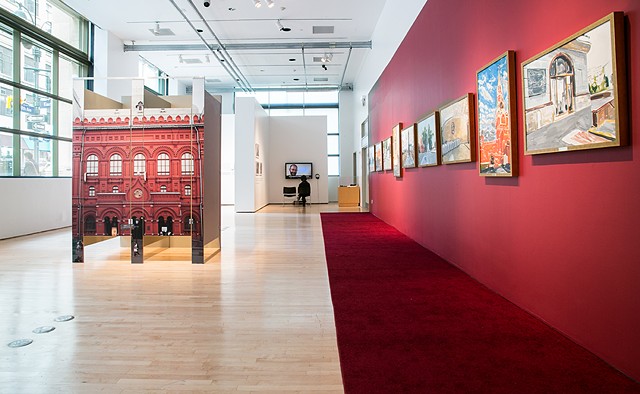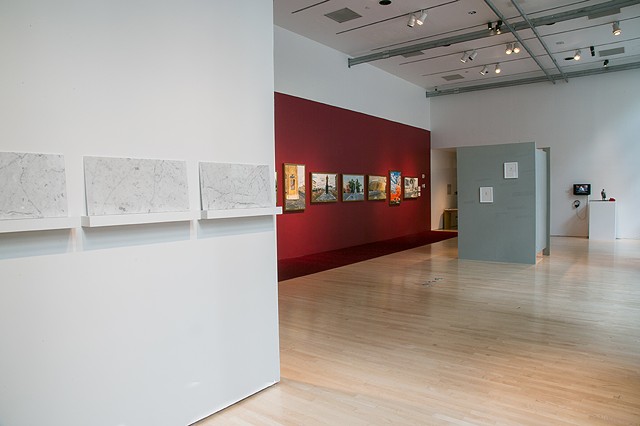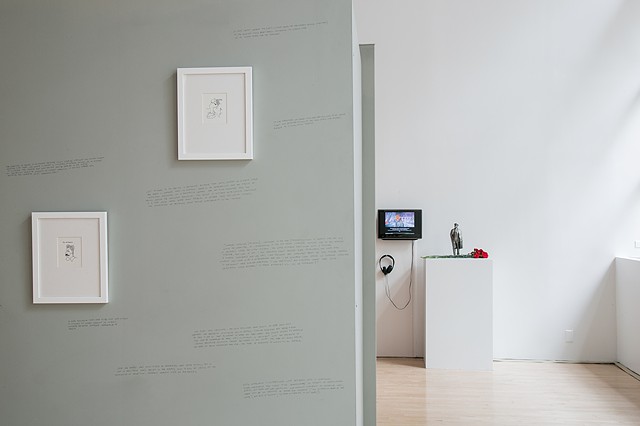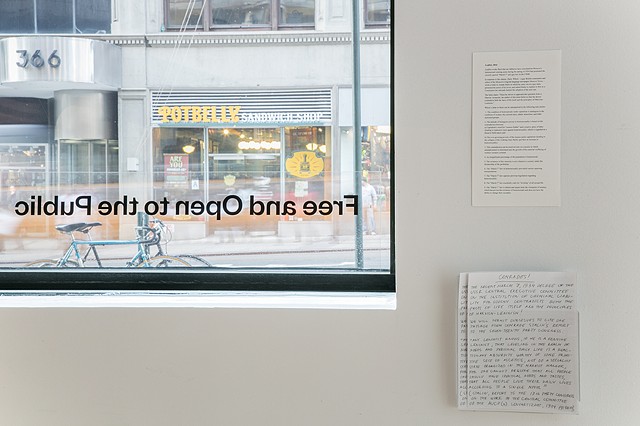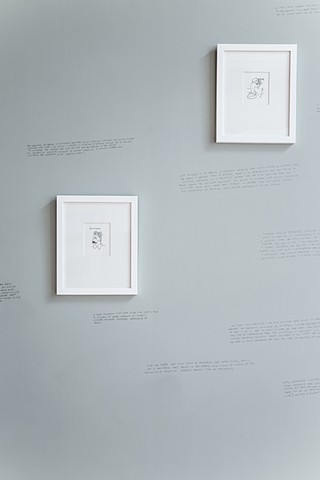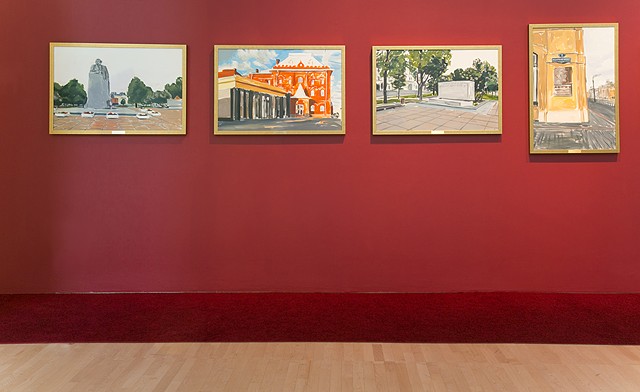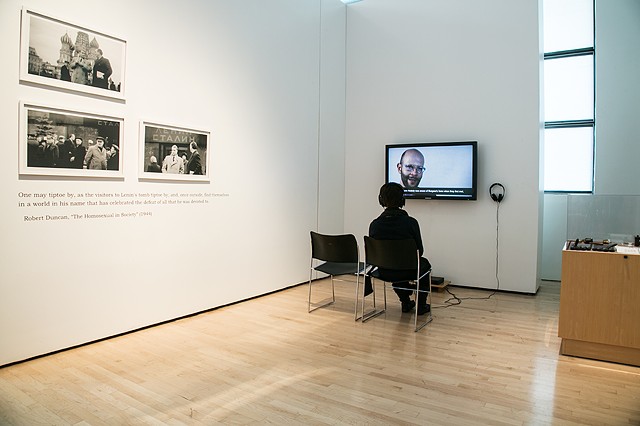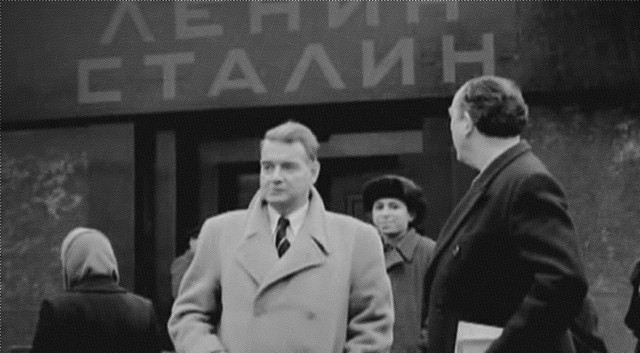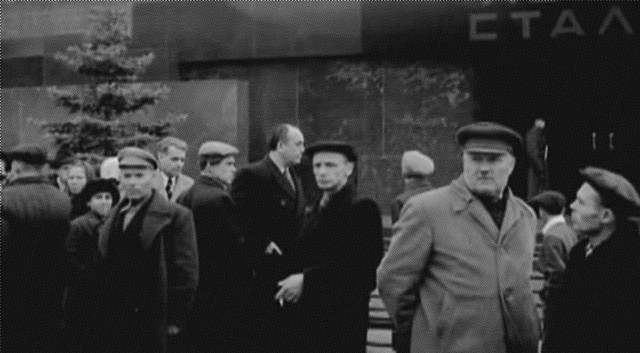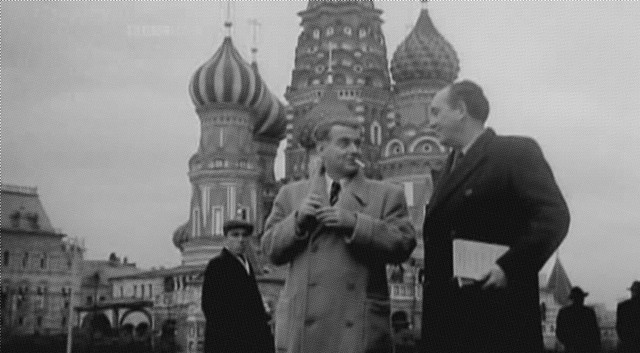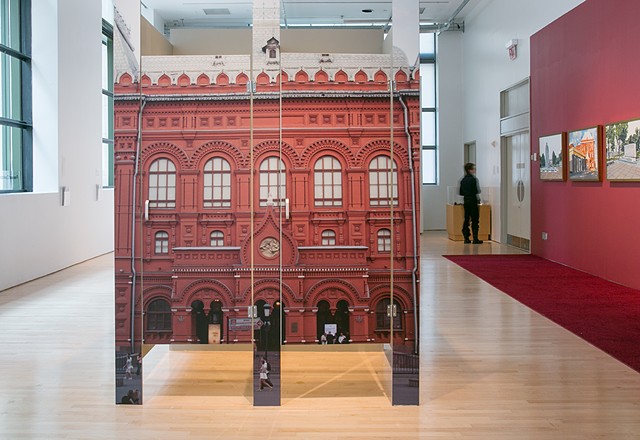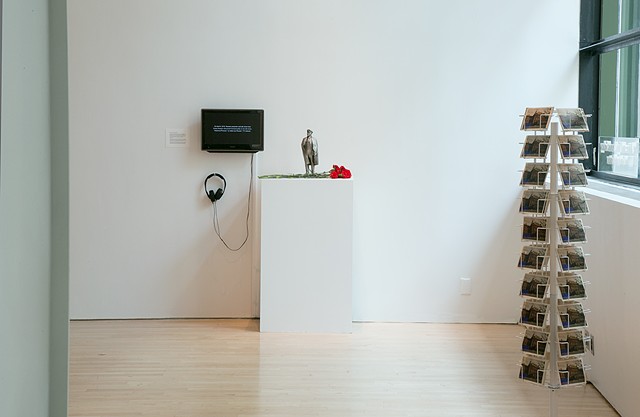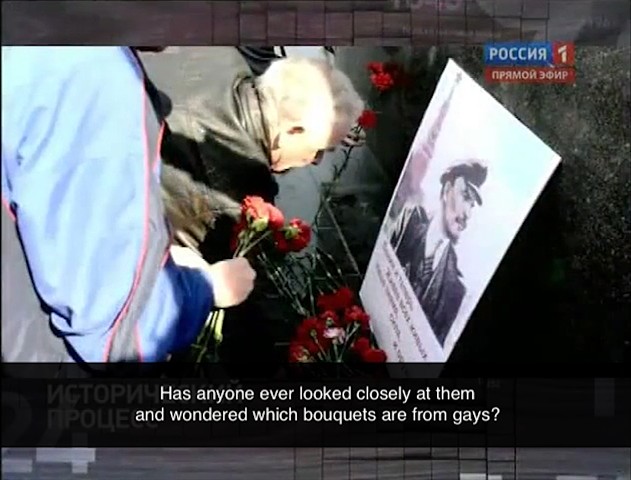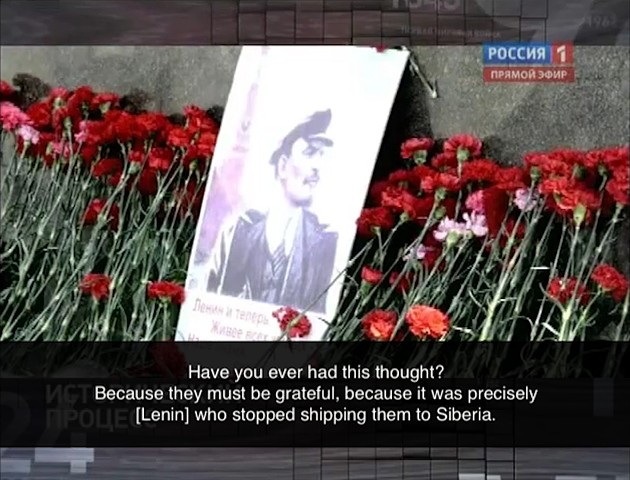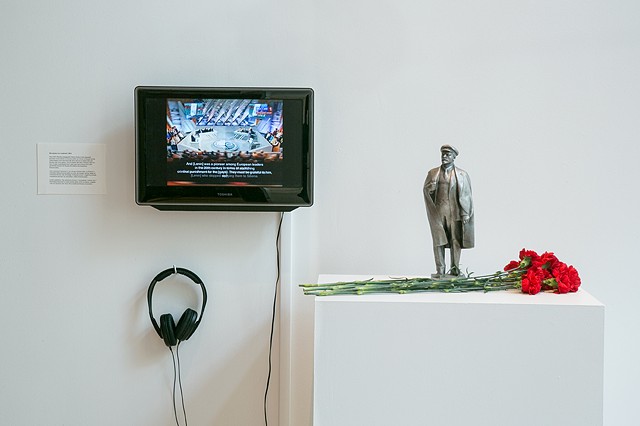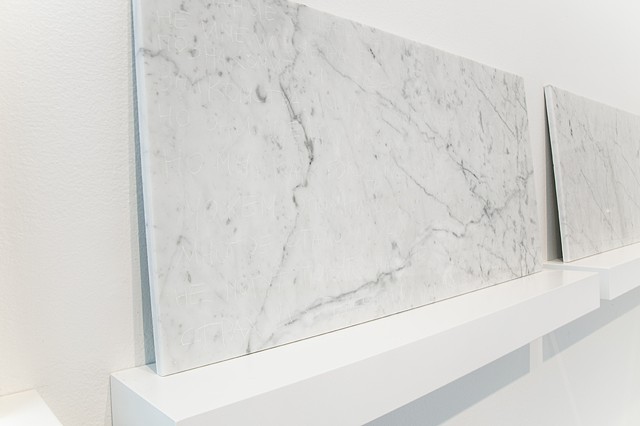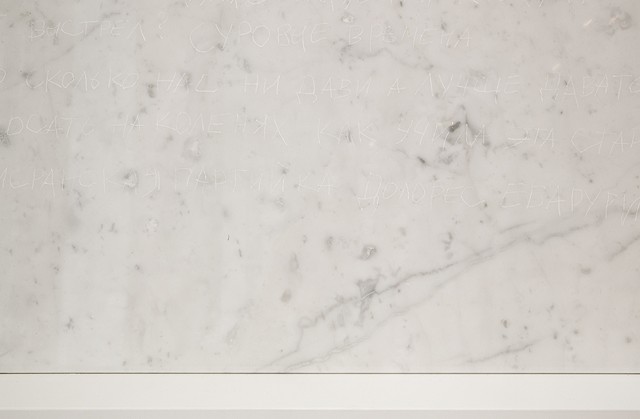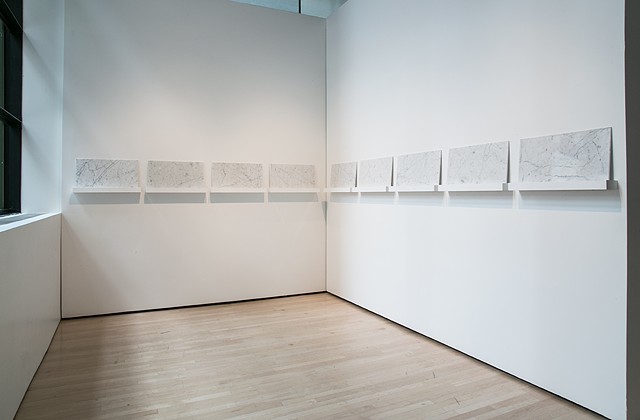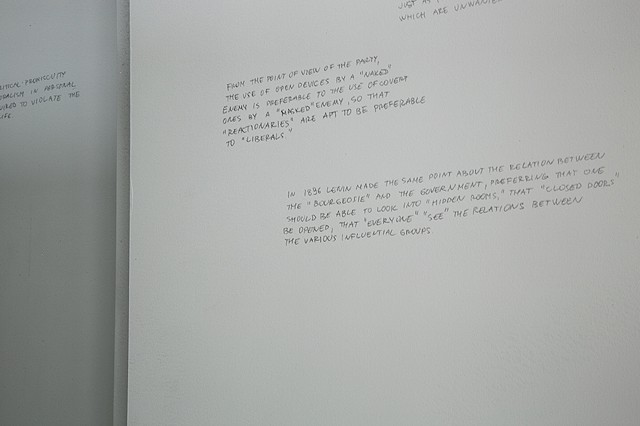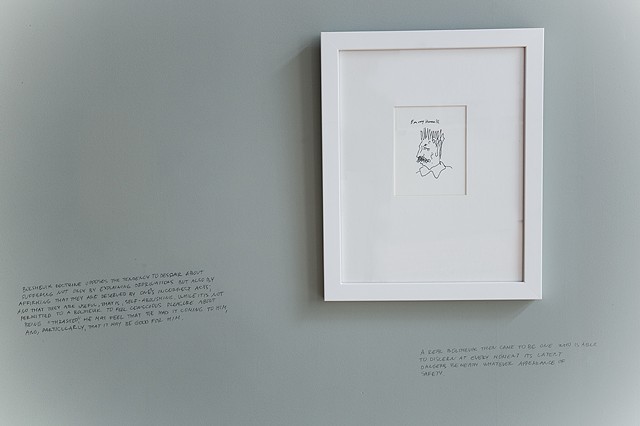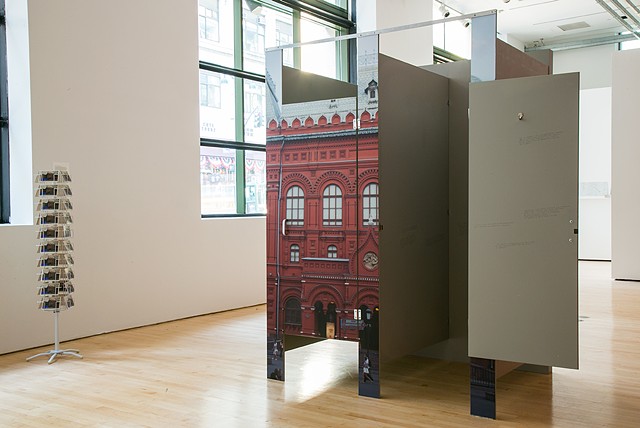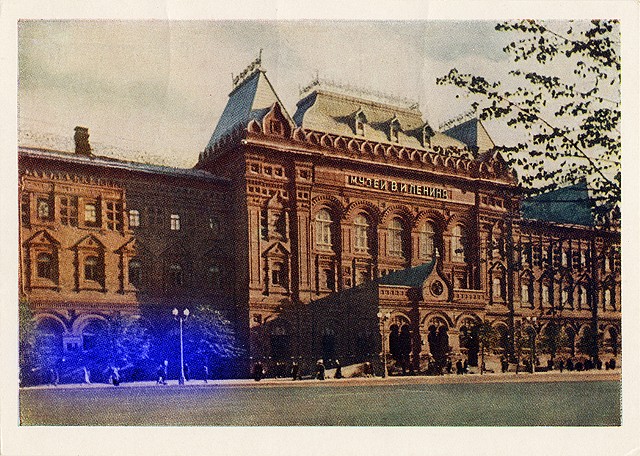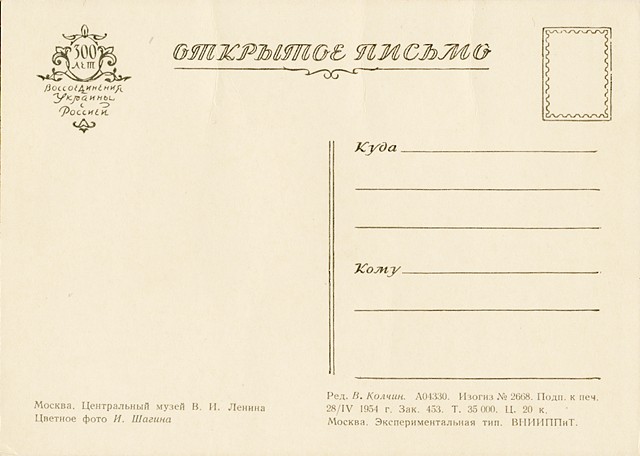The Lenin Museum, 2014
Vladimir Lenin's government decriminalized homosexuality in Russia shortly after the October Revolution of 1917. The period between 1918 and 1933 in the USSR was characterized by a relative tolerance towards gays. However, homosexuality was re-criminalized under Stalin in 1933-1934 as part of a wider right-wing assault, which included criminalization of abortion and return to petit bourgeois values and remained criminalized there until 1993. Between 1940s-1980s, the public toilets in the basement of the Central V.I. Lenin Museum in Moscow were covertly used for anonymous gay sex.
At the beginning of the Cold War between 1949-1953, The Harvard Project on the Soviet Social System allegedly included the research into the so-called "complex of latent homosexuality" of Soviet leaders, and especially Lenin, adapting for the Cold War use the earlier research into the Nazi Society, including Theodor Adorno's "The Authoritarian Personality." In 1953, the American academic Nathan Leites, who earlier worked for The Harvard Project, authored the book "A Study of Bolshevism" sponsored by the Rand Corporation and the United States Air Force, in which he inspected Lenin's writings among other things for traces of his alleged "repressed homosexual desire," effectively instrumentalzing 1950s homophobia as a tool for struggle against the Soviet Union.
In 2011, a prominent right-wing Russian TV personality Dmitry Kiselev during a TV talk show on homosexuality posed the following question to his audience: "On April 22nd (V.I. Lenin's birthday), flowers will be laid to thousands of Lenin statues all over our country. Has anyone ever looked closely at them and wondered which bouquets are from gays? Have you ever had this thought? Because they must be grateful, because it was precisely [Lenin] who stopped shipping them to Siberia," effectively instrumentalizing the post-Soviet Russian society's anti-Communist sentiment as a homophobic tool.
The project "The Lenin Museum" reflects upon the historical contradictions and complexities of intersection between Communism, anti-Communism, sexual identity, and ideology. It reflects on how homosexuality was repressed in the Soviet Union during and after Stalin, following its de-criminalization under Lenin. The show also reflects on how during the Cold War the forces of anti-Communism in the West employed and instrumentalized homophobic sentiments as a weapon in the struggle against the Soviet Union, and how the anti-Communist discourse contributes today to the construction of political homophobia in the post-Soviet Russia. The project "The Lenin Museum" commemorates the emancipatory promise of the Russian Revolution and mourns the fates of the post-1934 queer Soviet subjects, who were reduced to expressing their sexuality in the toilets of Lenin Museum in Moscow between 1940s-1980s, while drawing conceptual connections to the unstable predicament of the LGBTQI community in present-day post-Communist Russia.

